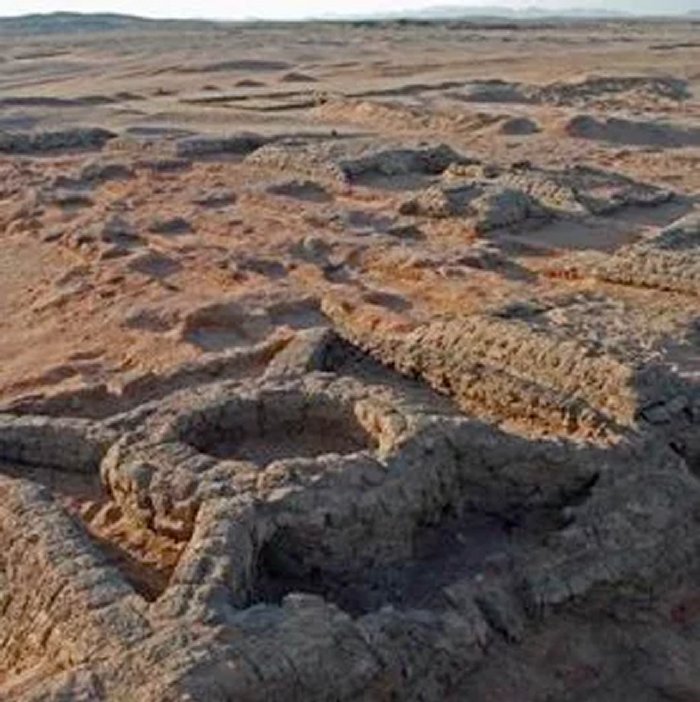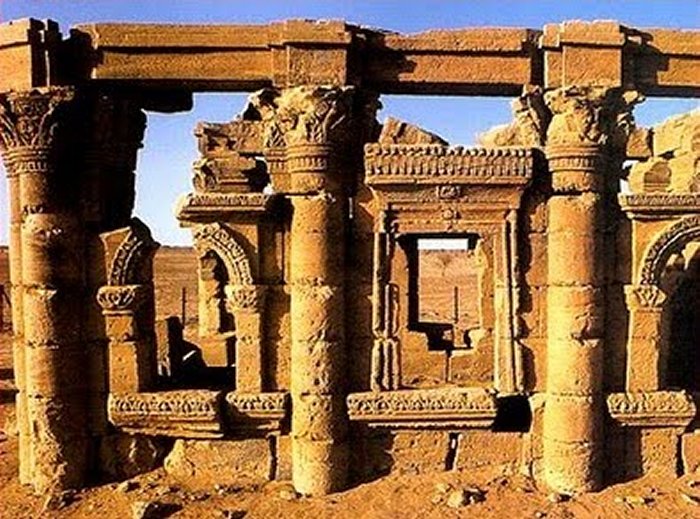Ancient Napata And Meroe Kingdoms Reveal Secrets Of Queen Tiye And Goddess Maat
Ellen Lloyd - AncientPages.com - Sudan was once home to a powerful ancient civilization. Today the ancient kingdom of Nubia is almost forgotten by history and neglected by archaeology because marvels of ancient Egypt are in focus, but those who conduct excavations in Sudan can be greatly rewarded.
Archaeologists have unearthed tombs, steles, and lintels at the archaeological site of Sedeinga, a place that is known for being home to the ruins of the Egyptian temple of Queen Tiye, the royal wife of Amenhotep III.
Ancient Pyramids Discovered in Sudan Necropolis. Credit: Photo copyright Vincent Francigny/SEDAU
The necropolis of Sedeinga stretches across more than twenty-five hectares and is home to the vestiges of at least eighty brick pyramids and over a hundred tombs, dating from the kingdoms of Napata and Meroe (seventh-century BCE-fourth century CE).
Great City Of Napata Was An Important Ancient Capital
As mentioned earlier on Ancient Pages, the ancient great city of Napata in the kingdom of Kush became a capital of a significant part of the ancient world and the Egyptian custom of royal burial under pyramids was introduced into Kush. The people of Napata, at the time, were culturally Egyptianized.
Unfortunately, there is little historical information about the people who lived in the kingdoms of Napata and Meroe, a fact that makes it difficult to date the necropolis of Sedeinga.
City ruins of Napata. About 300 years later, Napata became the capital of an independent Nubian kingdom, the Kingdom of Kush.
However, researchers have been able to determine that most of the pyramids and tombs are buildings dating from the era of the Napata kingdom that was later adjusted by the Meroitics. These adjustments were thus made five centuries after the initial building on the site, which the Meroitics supplemented with new chapels built out of brick and sandstone blocks on the western side of the pyramids, and which were intended for the worship of the deceased. This practice was particular to the Napatans and Meroitics, who veritably revered the monuments of the past, unlike their Egyptian neighbors.
See also:
Taharqa – The Most Powerful Of The Black Pharaohs
Chapel Lintel Representing Maat, The Egyptian Goddess Of Order, Equity, And Peace
Archaeologists working at the site have made several intriguing finds. Pieces of decorated sandstone, such as steles as well as lintels and door surrounds have been discovered at the surface, providing magnificent examples of Meroitic funerary art.
One of the most extraordinary finds is a chapel lintel representing Maat, the Egyptian goddess of order, equity, and peace. This is the first extant representation of this goddess depicting her with African characteristics.
Goddess Maat was a very important Egyptian deity.
It is also worth mentioning that in 20017, archaeologists discovered a stele in the name of a Lady Maliwarase. The stele sets out her kinship with the notables of Nubia (in the north of the kingdom of Meroe): she was the sister of two grand priests of Amon, and one of her sons held the position of governor of Faras, a large city bordering the second cataract of the Nile.
Stele in the name of Lady Maliwarase. Credit: © Claude Rilly / Sedeinga archaeological mission
The archaeologists have also unearthed a lintel inscribed with four lines of text describing the owner of the sepulcher, another great lady, Adatalabe. She hailed from an illustrious lineage that included a royal prince, a member of the reigning family of Meroe. These two steles written for high-ranking women are not isolated examples in Sedeinga. In Meroitic society, it was indeed women who embodied the prestige of a family and passed on its heritage.
It's very possible this tradition is based on the belief in the goddess Maat. As previously discussed on Ancient Pages, there is evidence that ancient Egyptian women had the same rights as men, and the reasons this was the case can be found in Egyptian cosmology and the worship of goddess Maat.
The ancient Kingdom of Nubia remains neglected by archaeologists, but recent discoveries clearly show this region of the world is of great historical and mythological importance.
Written by Ellen Lloyd – AncientPages.com
Copyright © AncientPages.com All rights reserved. This material may not be published, broadcast, rewritten or redistributed in whole or part without the express written permission of AncientPages.com
More From Ancient Pages
-
 Anchor Church Caves – Has The Home Of Anglo-Saxon King Eardwulf And Saint Hardulph Been Found?
Archaeology | Jul 23, 2021
Anchor Church Caves – Has The Home Of Anglo-Saxon King Eardwulf And Saint Hardulph Been Found?
Archaeology | Jul 23, 2021 -
 Ancient DNA From Medieval Germany Reveals The True Story Of Ashkenazi Jews
Archaeology | Nov 28, 2022
Ancient DNA From Medieval Germany Reveals The True Story Of Ashkenazi Jews
Archaeology | Nov 28, 2022 -
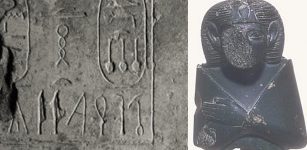 Sobekneferu: First Female Pharaoh In Ancient Egypt
Featured Stories | Mar 9, 2019
Sobekneferu: First Female Pharaoh In Ancient Egypt
Featured Stories | Mar 9, 2019 -
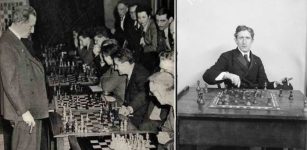 On This Day in History: Brilliant U.S. Chess Champion F. J. Marshall Plays 105 Games Simultaneously – On Mar 21, 1916
News | Mar 21, 2017
On This Day in History: Brilliant U.S. Chess Champion F. J. Marshall Plays 105 Games Simultaneously – On Mar 21, 1916
News | Mar 21, 2017 -
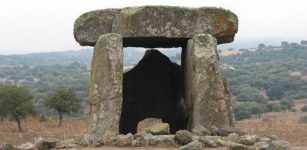 Ancient Secrets Of Megaliths And Anti-Gravity Revealed – Examination Of An Unknown Property Of Static Electricity
Ancient Technology | Feb 17, 2020
Ancient Secrets Of Megaliths And Anti-Gravity Revealed – Examination Of An Unknown Property Of Static Electricity
Ancient Technology | Feb 17, 2020 -
 Little Known History Of Amazon’s Ashaninka People Studied By Researchers
Archaeology | Mar 21, 2023
Little Known History Of Amazon’s Ashaninka People Studied By Researchers
Archaeology | Mar 21, 2023 -
 Ghostly Appearance Of Weird Ancient City Suspended In The Sky Witnessed By Many People
Ancient Mysteries | Jul 9, 2019
Ghostly Appearance Of Weird Ancient City Suspended In The Sky Witnessed By Many People
Ancient Mysteries | Jul 9, 2019 -
 Steamship SS Mesaba Sent Warning To RMS Titanic In 1912 – Her Wreck is Now Identified
Archaeology | Sep 27, 2022
Steamship SS Mesaba Sent Warning To RMS Titanic In 1912 – Her Wreck is Now Identified
Archaeology | Sep 27, 2022 -
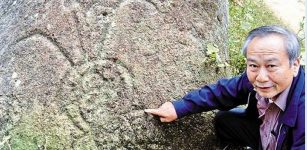 Extraterrestrial Visit Recorded On Stone: They Came From The Stars
Featured Stories | May 4, 2014
Extraterrestrial Visit Recorded On Stone: They Came From The Stars
Featured Stories | May 4, 2014 -
 Garden Of Eden And Its Four Rivers – Possible Locations Of Biblical Paradise Suggested By Archaeologists, Historians And Biblical Scholars
Biblical Mysteries | May 29, 2017
Garden Of Eden And Its Four Rivers – Possible Locations Of Biblical Paradise Suggested By Archaeologists, Historians And Biblical Scholars
Biblical Mysteries | May 29, 2017 -
 DNA Studies Of Inhabitants Of Prehistoric Çatalhöyük – One Of The Oldest Cities
Archaeology | May 28, 2019
DNA Studies Of Inhabitants Of Prehistoric Çatalhöyük – One Of The Oldest Cities
Archaeology | May 28, 2019 -
 Archaeological Finds Shed New Light On The Paleo Diet Habits Of Ancient Hunter-Gatherers
Archaeology | Jan 13, 2025
Archaeological Finds Shed New Light On The Paleo Diet Habits Of Ancient Hunter-Gatherers
Archaeology | Jan 13, 2025 -
 Ancient Mysteries Of Japan – Strange Manuscripts Written In Unknown Language Discovered By Scientist – Part 1
Ancient Mysteries | Aug 31, 2019
Ancient Mysteries Of Japan – Strange Manuscripts Written In Unknown Language Discovered By Scientist – Part 1
Ancient Mysteries | Aug 31, 2019 -
 Magnificent New Trove Of Ancient Egyptian Artifacts And 250 Mummies At The Saqqara Necropolis
Archaeology | May 30, 2022
Magnificent New Trove Of Ancient Egyptian Artifacts And 250 Mummies At The Saqqara Necropolis
Archaeology | May 30, 2022 -
 Mysteries Of The Huldufolk – The Hidden People Of Iceland
Featured Stories | Feb 1, 2022
Mysteries Of The Huldufolk – The Hidden People Of Iceland
Featured Stories | Feb 1, 2022 -
 Countless Artifacts, Structures And Roads Discovered In Ancient City Of Aigai, Turkey
Archaeology | May 16, 2022
Countless Artifacts, Structures And Roads Discovered In Ancient City Of Aigai, Turkey
Archaeology | May 16, 2022 -
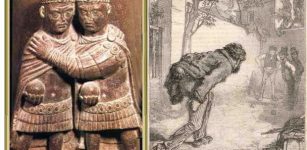 Ancient Egyptians Played Bowling 5,000 Years Ago
Ancient History Facts | Feb 22, 2016
Ancient Egyptians Played Bowling 5,000 Years Ago
Ancient History Facts | Feb 22, 2016 -
 Virginia’s Mysterious Vault With Remarkable Secret Ancient Documents Still Raises Many Questions
Featured Stories | Oct 17, 2024
Virginia’s Mysterious Vault With Remarkable Secret Ancient Documents Still Raises Many Questions
Featured Stories | Oct 17, 2024 -
 How Far South Did Prehistoric Highly Skilled Polynesian Seafarers Sail?
Archaeology | Nov 1, 2024
How Far South Did Prehistoric Highly Skilled Polynesian Seafarers Sail?
Archaeology | Nov 1, 2024 -
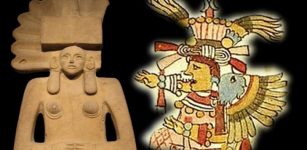 What Was An Aztec Confession?
Ancient History Facts | Jul 25, 2017
What Was An Aztec Confession?
Ancient History Facts | Jul 25, 2017

